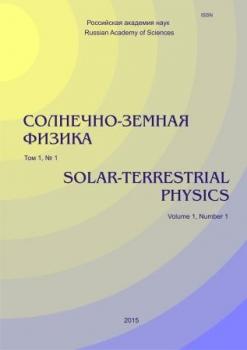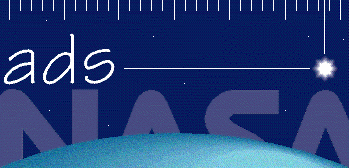Якутск, Россия
Якутск, Россия
В течение 2009–2016 гг. на территории с границами 40–80° N, 60–180° E проанализированы вариации грозовой активности, представленной количеством грозовых разрядов по данным Всемирной грозолокационной сети WWLLN. Выделены две области с повышенным уровнем грозовой активности: западный очаг (48–60° N и 60–90° E), восточный очаг (40–55° N и 110–140° E). Плотность грозовых разрядов в этих областях в 10–100 раз превышает плотность разрядов на окружающих территориях. Сравнение вариаций суточного количества грозовых разрядов и потока радиоизлучения Солнца на волне 10.7 см показало слабую линейную корреляцию между ними: коэффициент корреляции от –0.55 до 0.86 для западного региона и от –0.78 до 0.39 для восточного за все летние сезоны. На возрастающей ветви 24-го солнечного цикла происходит пространственное перераспределение количества грозовых разрядов между восточным и западным регионами высокой грозовой активности. В максимумах солнечного цикла и на его спадающей ветви перераспределения становятся не настолько ярко выраженными как во время возрастающей ветви.
грозовой разряд, пространственное распределение, Всемирная грозолокационная сеть
INTRODUCTION
The impact of space weather on low atmospheric layers is a great problem. It is important to determine the contribution of space weather to lightning activity, ignoring tropospheric processes [Rycroft, 2014]. Obser-vations in different regions over the world show diverse but certain influence of solar activity on lightning activi-ty. As inferred from regular satellite monitoring over South Asia and Southeast Asia, the lightning activity was in antiphase with solar activity from 2000 to 2010 [Siingh et al., 2013]. The negative correlation between
lightning activity and solar activity was also found in [Pinto Neto et al., 1998; Raspopov et al, 2010]. One of the probable processes is solar modulation of galactic cosmic rays, which influence cloud formation. This assumption is confirmed by different long-term observations showing positive feedback between lightning activity variations and galactic cosmic ray flux [Chronis, 2009; Ajieva et al, 2010]. Another effect space weather has on the lightning rate is suggested in [Owens et al, 2014; Scott et al, 2014]. Basing on observations of lightning activity made over Great Britain during 6 years, they have found a lightning rate response to the fast solar wind. Arrival of the high-speed stream in Earth also coincides with a small (∼1 %) but rapid decrease in the galactic cosmic ray flux, a moderate (∼6 %) increase in lower energy solar energetic protons (SEPs), and a substantial, statistically significant increase in lightning rates. Also, the significant increase or decrease in the lightning rate and thunder days was found to be consistent with changes of the heliospheric magnetic field polarity. Another probable process of solar modulation of lightning rate is the impact on the global electric circuit and through it on thunderstorms [Harrison et al, 2010].
The object of this study is to estimate the correlation of lightning activity spatial-temporal distribution with solar activity at midlatitudes in northern Asia
1. Abarca S.F., Corbosiero K.L., Galarneau T.J.Jr. An evaluation of the Worldwide Lightning Location Network (WWLLN) using the National Lightning Detection Network (NLDN) as ground truth. J. Geophys. Res. 2010, vol. 115, no. D18, pp. D18206.
2. Adzhieva A.A., Khorguani F.A. Rhythmic variations of lightning processes and solar activity. Doklady Adygskoi (Cherkesskoi) Mezhdunarodnoi akademii nauk [Rep. Adygskaya (Cherkesskaya) International Academy of Science]. 2010, vol. 12, no. 1, pp. 105-113. (In Russian).
3. Baldwin M.P., Gray L.J., Dunkerton T.J., Hamilton K., Haynes P.H., Randel W.J., Holton J.R., Alexander M.J., Hirota I., Horinouchi T., Jones D.B.A., Kinnersley J.S., Marquardt C., Sato K., Takahashi M. The quasi-biennial oscillation. Rev. Geophys. 2001, vol. 39, no. 2, pp. 179-229.
4. Boville B.A. The influence of the polar night jet on the tropospheric circulation in a GCM. J. At-mos. Sci. 1984, vol. 41, pp. 1132-1142.
5. Chronis T.G. Investigating possible links between incoming cosmic ray fluxes and lightning activity over the United States. J. Climate. 2009, vol. 22, pp. 5748.
6. Dowden, R. L., Brundell J. B., Rodger C. J. VLF lightning location by time of group arrival (TOGA) at multiple sites. J. Atmos. Solar-Terr. Phys. 2002, vol. 64, no. 7, pp. 817-879.
7. Harrison R.G., Usoskin I. Solar modulation in surface atmospheric electricity. J. Atmos. Solar-Terr. Phys. 2010, vol. 72, pp. 176-182.
8. Holton J.R., Tan H.-C. The influence of the equatorial quasi-biennial oscillation on the global circulation at 50 mb. J. Atmos. Sci. 1980, vol. 37, pp. 2200-2208.
9. Hutchins M.L., Holzworth R.H., Brundell J.B., Rodger C.J. Relative detection efficiency of the World Wide Lightning Location Network. Radio Sci. 2012, vol. 47, no. 6, pp. RS6005.
10. Khairullina G.R., Astafieva N.M. Kvazidvu-khletnie kolebaniya v atmosfere Zemli. Obzor: nablyudenie i mekhanizmy formirovaniya [Quasi-Beinnial Oscillation in the Earth’s Atmophere. Review: Observations and Physical Mechanisms]. Moscow: IKI RAS, 2011. 60 p. (In Russian).
11. Kodera K., Yamazaki K., Chiba M., Shibata K. Downward propagation of upper stratospheric mean zonal wind perturbation to the troposphere. Geophys. Res. Lett. 1990, vol. 17, no. 9, pp. 1263-1266.
12. Owens M.J., Scott C.J., Lockwood M., Barnard L., Harrison R.G., Nicoll K., Watt C., Bennett A.J. Modulation of UK lightning by heliospheric magnetic field polarity. Environmental Res. Lett. 2014, vol. 9, no. 11, pp. 115009.
13. Pinto Neto O., Pinto I.R.C.A., Pinto O.Jr. The relationship between thunderstorm and solar activity for Brazil from 1951 to 2009. J. Atmos. Sol.-Terr. Phys. 2013, vol. 98, pp. 12-21.
14. Raspopov O.M., Mullayarov V.A., Dergachev V.A. About coupling of solar and lightning activities. Trudy 31 konferentsii po kosmicheskim lucham [Proc. 31st Russian Conference on Cos-mic Rays]. Moscow, 2010, pp. GEO_36. (In Russian).
15. Rycroft M.J. Thunder and lightning - what determines where and when thunderstorms occur? Environmental Res. Lett. 2014, vol. 9, no. 12, pp. 121001.
16. Scott C.J., Harrison R.G., Owens M.J., Lock-wood M., Barnard L. Evidence for solar wind modulation of lightning. Environmental Res. Lett. 2014, vol. 9, no. 5, pp. 055004.
17. Siingh D., Kumar P.R., Kulkarni M.N., et al. Lightning, convective rain and solar activity - over the south/southeast Asia. Atmos. Res. 2013, vol. 120-121, pp. 99-111.
18. Tarabukina L.D., Kozlov V.I., Karimov R.R., Mullayarov V.A. Spatial distribution of lightning strikes over North Asia. Proc. SPIE. 21st International Symposium on Atmospheric and Ocean Optics: Atmospheric Physics. 2015, vol. 9680, pp. 96805S.


















